In Fire-Stricken Maui, Sustainable Land Management Is Key
In Fire-Stricken Maui, Sustainable Land Management Is Key Modern Farmer
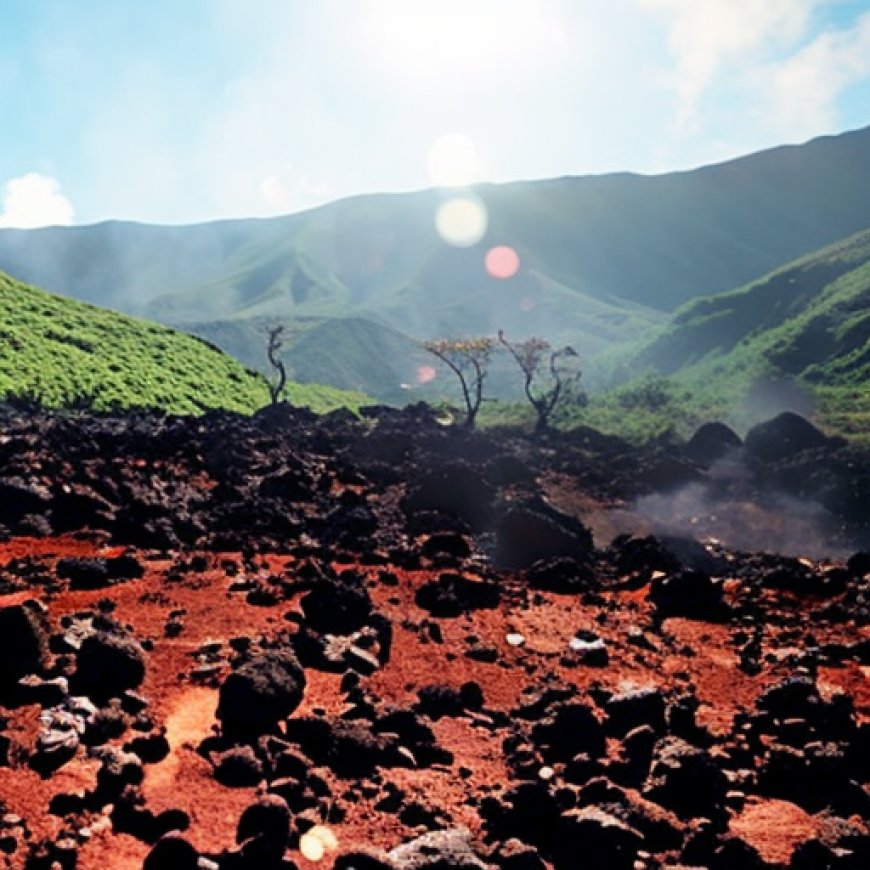

Surveying the Aftermath of the Kula Upcountry Fire
One of three devastating wildfires that raged across Maui last month, the Kula Upcountry Fire left a lasting impact on the land. Brendan Balthazar, the owner of Diamond B Ranch, noticed an interesting pattern on his cattle ranch. Despite the fire burning through his pastureland, he found sizable patches of grass that remained unscathed. These areas were spared because the fuel load was low, highlighting the importance of land management in preventing wildfires.
Invasive Vegetation and Drought
The presence of invasive vegetation, such as Guinea grass and buffelgrass, has made conditions ripe for combustion in many areas of Maui. These grasses were introduced to the islands for livestock forage but have proliferated on unmanaged agricultural land. Coupled with prolonged drought, these fire-prone grasses have turned vast swaths of land into a “tinder box.” The dense growth poses a significant fire risk and threatens the resilience of both the land and Hawaii’s food system.
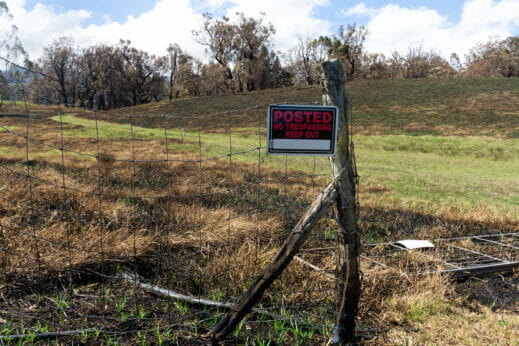
Image: Some areas of grazed pasture on Diamond B Ranch went unburned. (Photo: Jasmine Pankratz)
The Decline of Hawaiian Agriculture
Hawaii’s agricultural landscape has undergone a steep decline over the years. Large-scale plantations and ranches once dominated the land, but many of these fields and pastures now lie idle. These idle lands, often located near residential areas, provide fertile ground for invasive grasses and non-native plants to thrive. The loss of agricultural land poses a threat to the islands’ climate and ecosystems.
The Role of Agriculture in Minimizing Threats
Amid a warming planet and increasingly volatile climate patterns, agriculture plays a crucial role in minimizing the threats facing Hawaii. Productive fields and pastures require proper maintenance and investment in the land. Encouraging a diversity of agricultural uses builds resilience in both the land and Hawaii’s food system. With average temperatures and sea levels predicted to rise, it is essential to prioritize preparedness and sustainable agricultural practices.
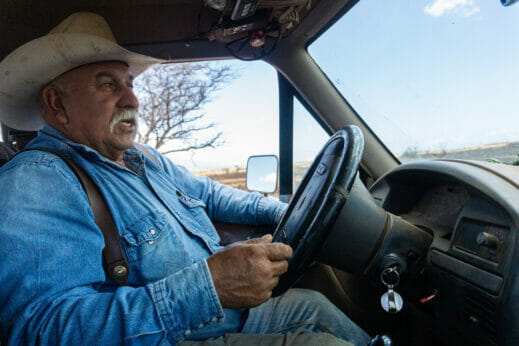
Image: Brendan Balthazar surveys the fire impacts on the land he manages. (Photo: Jasmine Pankratz)
The Vulnerability of Islands to Extreme Climates
Hawaii’s islands are extremely vulnerable to extreme climates and weather phenomena. Decreasing rainfall and climbing temperatures have left the drier, leeward stretches of the islands increasingly parched. Intense tropical storms, often unseasonal, bring gale-force winds that can easily ignite fires across the arid landscape. Climate variability, both human-induced and natural, plays a significant role in setting the scene for these extreme events.
The Impact of Land Use on Hawaii’s Climate
Land use modifications have a direct impact on Hawaii’s climate. Urbanization and the conversion of native forests to agricultural land contribute to changes in the climate. While it is challenging to attribute the recent fires to any one cause, the effects of land use changes on Hawaii’s climate cannot be ignored. Islands like Hawaii are particularly susceptible to extreme climates and weather phenomena, making preparedness and sustainable land management strategies crucial.
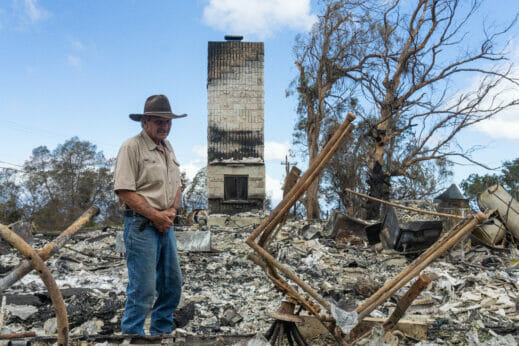
Image: Doug Wagner stands next to what’s left of his home in Kula. (Photo: Jasmine Pankratz)
The Transformation of Hawaii’s Landscape
The colonization of Hawaii in the 19th century led to a dramatic transformation of the island landscape. Large sugarcane and pineapple plantations replaced sustainable and diverse farming practices. The sugar industry dominated the economy, but falling sugar prices in the 1970s marked its eventual demise. The closure of the state’s last sugar plantation in 2016 resulted in a significant decrease in active cropland on Maui. The transformation of Hawaii’s landscape has had far-reaching consequences for agriculture and food security.
The Spread of Invasive Grasses
Invasive grasses, introduced to Hawaii over the last 50 years, now cover nearly a quarter of the state. These highly flammable grasses pose a significant wildfire threat. Eradication efforts have been inconsistent, and land ownership complexities make uniform stewardship strategies challenging to implement. Invasive species control and fire prevention often fall to individual landowners, with limited state or local direction and oversight. The battle against invasive species requires greater support, resources, and initiatives.
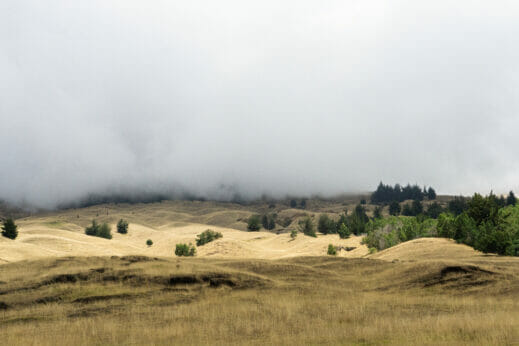
Image: The rolling hills of Brendan Balthazar’s leased pasture up the mountain in Kula are lined with invasive trees that are difficult to maintain. (Photo: Jasmine Pankratz)
The Importance of Agricultural Land Management
Agriculture plays a crucial role in land management strategies. Productive fields and pastures require maintenance and investment in the land. Large-scale plantations, despite their extractive practices, once provided a level of protection against invasive species. Continuity in agricultural land use is essential, but supporting a diverse mix of farms and ranches is equally important. Small operations, multi-generational producers, and traditional cultivation contribute to building resilience in the land and ensuring food security.
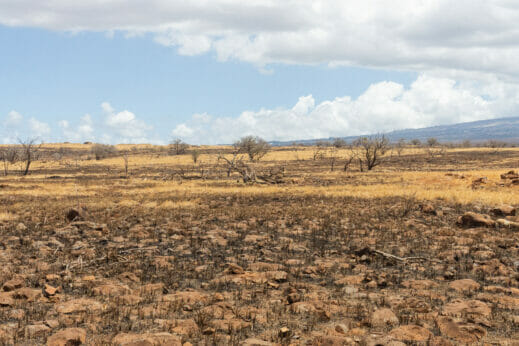
Image: Dry grass stubble between the hard rocks that
SDGs, Targets, and Indicators
1. Sustainable Development Goal 13: Climate Action
– Target 13.1: Strengthen resilience and adaptive capacity to climate-related hazards and natural disasters in all countries.
– Indicator 13.1.2: Number of countries that have integrated mitigation, adaptation, impact reduction, and early warning into their national policies, strategies, and planning.
2. Sustainable Development Goal 15: Life on Land
– Target 15.1: By 2020, ensure the conservation, restoration, and sustainable use of terrestrial and inland freshwater ecosystems and their services, in particular forests, wetlands, mountains, and drylands, in line with obligations under international agreements.
– Indicator 15.1.1: Forest area as a proportion of total land area.
3. Sustainable Development Goal 2: Zero Hunger
– Target 2.4: By 2030, ensure sustainable food production systems and implement resilient agricultural practices that increase productivity and production, that help maintain ecosystems, that strengthen capacity for adaptation to climate change, extreme weather, drought, flooding, and other disasters, and that progressively improve land and soil quality.
– Indicator 2.4.1: Proportion of agricultural area under productive and sustainable agriculture.
Table: SDGs, Targets, and Indicators
| SDGs | Targets | Indicators |
|---|---|---|
| Sustainable Development Goal 13: Climate Action | Target 13.1: Strengthen resilience and adaptive capacity to climate-related hazards and natural disasters in all countries. | Indicator 13.1.2: Number of countries that have integrated mitigation, adaptation, impact reduction, and early warning into their national policies, strategies, and planning. |
| Sustainable Development Goal 15: Life on Land | Target 15.1: By 2020, ensure the conservation, restoration, and sustainable use of terrestrial and inland freshwater ecosystems and their services, in particular forests, wetlands, mountains, and drylands, in line with obligations under international agreements. | Indicator 15.1.1: Forest area as a proportion of total land area. |
| Sustainable Development Goal 2: Zero Hunger | Target 2.4: By 2030, ensure sustainable food production systems and implement resilient agricultural practices that increase productivity and production, that help maintain ecosystems, that strengthen capacity for adaptation to climate change, extreme weather, drought, flooding, and other disasters, and that progressively improve land and soil quality. | Indicator 2.4.1: Proportion of agricultural area under productive and sustainable agriculture. |
Behold! This splendid article springs forth from the wellspring of knowledge, shaped by a wondrous proprietary AI technology that delved into a vast ocean of data, illuminating the path towards the Sustainable Development Goals. Remember that all rights are reserved by SDG Investors LLC, empowering us to champion progress together.
Source: modernfarmer.com

Join us, as fellow seekers of change, on a transformative journey at https://sdgtalks.ai/welcome, where you can become a member and actively contribute to shaping a brighter future.







